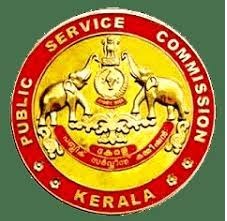KPSC Foreman (Electrical) Industries & Commerce Department Exam Syllabus : keralapsc.gov.in
Organisation : Kerala Public Service Commission (KPSC)
Exam Name : Post Of Foreman (Electrical) In Industries & Commerce Department Exam
Announcement : Syllabus For Post Of Foreman (Electrical) In Industries & Commerce Department
Website : https://www.keralapsc.gov.in/taxonomy/term/202
What is KPSC Foreman Industries & Commerce Department Exam?
KPSC Foreman ndustries & Commerce Department Exam is organised by Kerala Public Service Commission. The Kerala Public Service Commission is a body created by the Constitution of India to select applicants for civil service jobs in the Indian state of Kerala according to the merits of the applicants and the rules of reservation. The Head Office of the KPSC is located at Pattom, Thiruvananthapuram, the State Capital.

Syllabus For KPSC Foreman Exam
The Syllabus For KPSC Foreman Industries & Commerce Department Exam are given below,
1.Electric Circuits – (10 marks)
Kirchoff’s laws – maximum power transfer theorem. Star/delta transformation. Energy stored in a capacitor and inductor. Analysis of coupled circuits – dot polarity convention – sinusoidal steady state analysis of coupled circuits. Generation of alternating voltages and currents – rms value, average value, peak factor, form factor. AC through series R, L, C circuit – series resonance- resonant power – bandwidth. Resonance in parallel circuits.
2.Magnetic Circuits- Absolute and relative permeability of a medium (10 marks)
Magnetic field strength- magnetic potential. Relation between magnetism and electricity – Series and parallel magnetic circuits with composite materials. Faraday’s laws of electromagnetic induction- Lenz’s law – statically and dynamically induced emf.
3. DC Generators (10 marks)
Constructional details, working principle – types of dc generators – emf equation – power stages – condition for maximum efficiency. DC motor – armature control and field control. Single phase transformer – working principle, equivalent circuit, losses in a transformer, condition for maximum efficiency. Three phase transformer – construction- difference between power transformer and distribution transformer. Alternators- constructional details –Synchronous motor – starting methods – synchronous condenser. Three phase induction motor – working principle, constructional details – slip, torque and current equations – torque- speed curve.

4. Digital Electronics – (10 marks)
Number Systems and Codes: Binary, Octal and hexadecimal conversions- ASCII code, Excess -3 code, Gray code. Combinational circuits – Adders – Full adder and half adder. Multiplexers- Demultiplexers. Flipflops – registers – counters. Digital – to – Analogue and Analogue-to-Digital conversion. Microprocessors – Internal architecture of 8085 microprocessor–Functional block diagram Instruction set – Addressing modes – Classification of instructions – Status flags. Machine cycles and T states – Fetch and execute cycles- Timing diagram.
5. Power Systems – (10 marks)
Line parameters -resistance- inductance and capacitance. Insulators –string efficiency – corona. Circuit breakers – rating- SF6 circuit breaker. Relays – types. Per unit quantities- symmetrical components – symmetrical and unsymmetrical fault. Power system stability – steady state, dynamic and transient stability-power angle curve.
6. Control Systems- (10 marks)
Transfer function of LTI systems – block diagram reduction – Signal flow graph – Mason’s gain formula – Type and Order of the systems- Characteristic equation Time domain specifications of transient and steady state responses- Impulse and Step responses of first order and second order systems. Static error coefficients of type 0,1,2 systems. Routh’s stability criterion. Frequency domain specifications. Polar plot and Bode plot – concepts of gain margin and phase margin- stability analysis.
7. Power Electronics – (10 marks)
SCR- Structure, Static characteristics. Fully controlled and half controlled bridge rectifier with R, RL and RLE loads. Voltage Source Inverters– 1-phase half-bridge & full bridge inverter with R and RL loads – Pulse width modulation. Single quadrant, Two quadrant and Four quadrant chopper. Operational Amplifiers – fundamental differential amplifier- Modes of operation. Properties of ideal and practical Op-amp – gain, CMRR and slew rate.
8. Measurements and Instrumentation (10 marks)
Measurement standards – errors – Types of Errors. Classification of instruments, secondary instruments–indicating, integrating and recording. Ammeters and voltmeters – moving coil, moving iron. Measurement of power: Dynamometer type wattmeter –Construction and working – 3- phase power measurement. Measurement of energy – Single phase energy meter – construction and working. Digital Energy meters -Time of Day(TOD) meters. Oscilloscopes- principle of operation of general purpose CRO-basics of vertical and horizontal deflection system.
Syllabus : http://www.syllabus.gen.in/uploads/pdf2022/2758-syllabus.pdf
9. Signals and Systems (10 marks)
Classification of signals – Elementary signals- Basic operations on continuous time and discrete time signals. Concept of systems – Classification of systems- Properties of systems – Time invariance- Linearity -Causality – Memory – Stability. Sampling process – Impulse train sampling – sampling theorem- Aliasing effect. Zero order and First order hold circuits.
10. Transducers (10 marks)
General classification- LVDT- angular displacement transducers- hall effect transducers. Batteries – Primary cells– secondary cells- battery ratings- grouping of cells. Wiring – systems of wiring- rules for domestic wiring. Earthing- types of earthing – rules for earthing. Illumination – Laws of illumination. Electric lamps – different types.